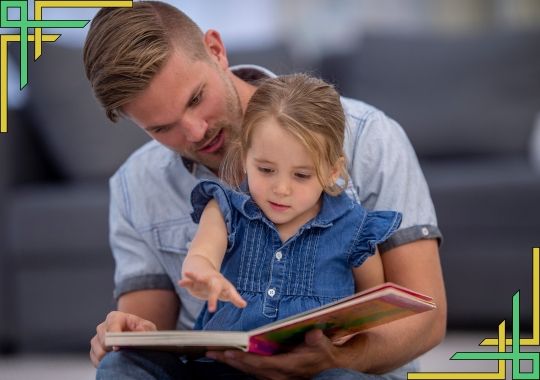Helping children with autism navigate the world around them is a rewarding and impactful endeavor. Autism Spectrum Disorder (ASD) affects communication, social interaction, and behavior, requiring unique approaches to support and intervention. Understanding the individual needs of each child is key to providing effective assistance. This guide offers insights, strategies, and resources to aid parents, caregivers, and educators in empowering children with autism to thrive and reach their full potential.
As Amazon affiliates we may earn a commission if you purchase a product at no cost to you.
Autism affects 1 out of every 68 children. It's a neurodevelopment disorder that impacts the ability to communicate and interact with others. This article offers eight strategies for helping a child with autism.
Help Your Child Get Enough Sleep
It is important for children with autism to get enough sleep. Sleep helps the brain to function properly and can help with behavior, mood, and learning.
There are a few things you can do to help your child get enough sleep:
Follow a routine: A bedtime routine can help signal to your child that it is time to wind down and go to sleep. Make sure the routine is calming and avoid anything that could be stimulating, such as watching television or playing video games.
Keep a consistent sleep schedule: Try to put your child to bed at the same time each night and wake them up at the same time each morning. This will help their body get into a regular sleep rhythm.
Create a calm environment: A dark, quiet room is ideal for sleeping. Consider using blackout curtains or an eye mask to block out any light, and use a white noise machine or fan to drown out any outside noise.
Avoid screen time before bed: The blue light from screens can interfere with sleep by making it harder for the brain to shut down for the night. Try avoiding screens for at least an hour before bedtime.
Get plenty of exercise during the day: Exercise can help tire out the body and make it easier to fall asleep at night. Just be sure not to exercise too close to bedtime as this can have the opposite effect and make it harder to fall asleep

Establish a Routine
It is important to establish a routine for your child who has autism. A routine will help your child feel comfortable and secure. It will also help your child to understand what is expected of him or her. Here are some tips for establishing a routine:
Keep a consistent schedule. Try to do the same activities at the same time each day. This will help your child know what to expect and when to expect it.
Make sure the environment is predictable. Avoid changes in environment that can be confusing or overwhelming for your child.
Use visual aids to help your child understand the routine. For example, you could use a picture schedule to show your child what activities will happen during the day.
Be flexible when necessary. There will be times when you need to deviate from the routine due to unexpected circumstances. When this happens, try to explain the change to your child in advance so that he or she knows what to expect.
Keep Things Simple
It can be difficult to know how to help your child who has autism, but one of the best things you can do is to keep things simple. This means avoiding overwhelming them with too much information or stimuli at once. Try to focus on one task or activity at a time, and break it down into small, manageable steps. Give them lots of time and patience to process what you’re asking of them, and be prepared to repeat yourself often. It can also be helpful to use visual aids such as pictures or diagrams to help explain things. Above all, try not to get frustrated – your child is doing their best, and so are you.
Understands the Differences Between You and Your Child
It can be difficult to understand your child if they have autism. Every child is different, and so is every case of autism. However, there are some general things that you can do to help your child who has autism.
One of the most important things you can do is to learn about autism. There is a lot of information available, and it can be overwhelming. However, the more you know about autism, the better equipped you will be to help your child.
Another important thing to remember is that you and your child are different people. Just because you have autism does not mean that your child does too. You may have some similar experiences, but it is important to remember that your child is their own person with their own unique needs and experiences.
Try to put yourself in your child's shoes as much as possible. Try to see the world from their perspective. This can be difficult, but it will help you better understand them and how they see the world.
Finally, don't forget that you are the expert on your child. No one knows them better than you do. Trust yourself and your instincts when it comes to helping your child with autism.

Use Visual Strategies to Communicate With Your Child
There are a number of visual strategies that can be used to communicate with your child who has autism. One such strategy is the use of picture boards. Picture boards can be used to help your child communicate their needs, wants, and thoughts. Another visual strategy that can be used is the use of sign language. Sign language can be used to help your child communicate with you and others around them. Additionally, you can also use visual supports such as picture schedules and social stories to help your child understand what is happening around them and to prepare them for upcoming events.
Get involved in your child's therapy and treatment plan
Attend appointments with therapists and doctors, and learn as much as you can about autism.
Be patient and understanding
Autism can be frustrating for both children and parents. Try to keep calm and provide support and love.
Advocate for your child
Learn about your rights as a parent of a child with autism, and fight for the services and accommodations your child needs.
Recommended Article

Frequently Asked Questions FAQs
How can I best support a child with autism?
Supporting a child with autism involves understanding their unique needs and abilities. Providing a structured environment, clear communication, and positive reinforcement can help them thrive.
What are some effective strategies for helping children with autism communicate?
For children with autism, communication can be challenging. Using visual aids, such as pictures or sign language, and practicing patience and understanding can help improve communication skills.
How can I help a child with autism develop social skills?
Building social skills in children with autism involves providing opportunities for social interaction in a structured and supportive environment. Role-playing, social stories, and peer modeling can be effective strategies.
Conclusion
There is no one-size-fits-all solution for autism, but there are many things that parents can do to help children with autism. We hope that our tips have been helpful and that you will be able to find ways to support your child's development. Remember, every child is different, so don't hesitate to ask for help from professionals if you need it. With the right support, your child can lead a happy and fulfilling life.










